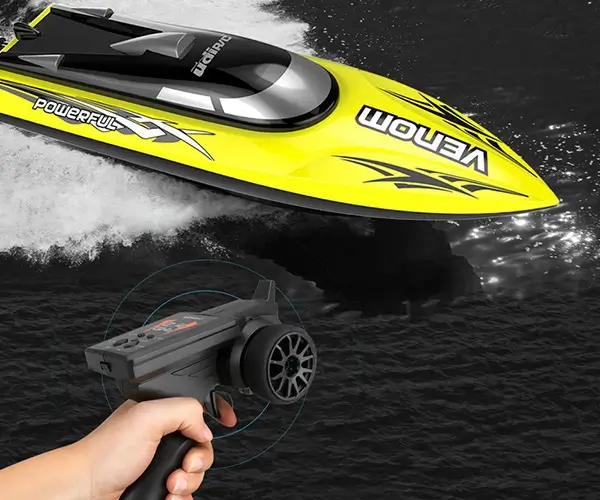Unlocking the Power of Arduino for DC Motor Speed Control
In the realm of electronics and robotics, the ability to precisely control a motor's speed is a foundational skill that opens doors to endless creative possibilities. Whether you're developing a robotics project, an automation system, or simply exploring electrical engineering, understanding how to regulate the speed of a direct current (DC) motor is critical.

Today, let’s embark on a journey through the fascinating world of DC motor speed control, powered by the versatile Arduino microcontroller. This article aims to demystify the process, offering clear insights, practical tips, and inspiration to bring your projects to life.
Why Control DC Motor Speed?
DC motors, appreciated for their simplicity and efficiency, are ubiquitous in countless applications—from small gadgets and toys to industrial machinery. The ability to modulate their speed can enhance functionality, improve performance, and enable nuanced control.
For example:
Robotics: Adjusting motor speed to maneuver precise movements. Automation: Regulating conveyor belts or mechanical arms for smooth operation. Home Automation: Motorized curtains or adjustable fans.
Having granular control over motor speed can distinguish a skilled engineer or hobbyist, transforming a basic motor into a dynamic component in complex systems.
The Heart of Speed Control: Pulse Width Modulation (PWM)
The fundamental technique for controlling DC motor speed with Arduino is Pulse Width Modulation (PWM). But what exactly is PWM?
Imagine toggling a switch on and off very rapidly—more on-time means the motor receives more energy, resulting in higher speed. Conversely, shorter on-times reduce power, slowing down the motor.
PWM creates a square wave signal with adjustable duty cycle—the percentage of time the signal stays high during one cycle. For example:
A 50% duty cycle means the signal is high half the time and low half the time. A 75% duty cycle signifies the signal is high 75% of the time, providing more power.
Because the Arduino’s digital pins can generate PWM signals (using analogWrite() function), controlling motor speed becomes straightforward.
How The Arduino Controls the Motor
At its core, controlling a DC motor involves three parts:
Microcontroller (Arduino): Generates PWM signals to dictate motor speed. Motor Driver (H-Bridge or PWM Driver): Safely supplies power to the motor and manages the direction. Power Supply: Provides adequate voltage and current for the motor.
An essential consideration in motor control systems is managing current. DC motors can draw high inrush currents, which can damage Arduino pins or the power supply if not handled properly. This is where motor driver modules like the L298N or L293D come into play—they serve as intermediaries that can handle high currents and control motor direction and speed effectively.
Components Needed
Before starting, gather the essentials:
Arduino Uno or compatible board DC motor (preferably brushed for simplicity) Motor driver module (L298N, L293D, or MOSFET-based driver) Power supply (matching motor requirements) Connecting wires and breadboard Potentiometer or sensor (optional, for dynamic speed adjustment)
Basic Wiring Setup
A typical wiring setup involves:
Connecting the motor terminals to the motor driver's output pins. Connecting the motor driver’s input pins to Arduino digital pins (for controlling speed and direction). Using PWM-capable pins (like pins 3, 5, 6, 9, 10, 11 on Arduino Uno). Connecting the motor driver’s power input to an appropriate external power source. Grounding all components together to ensure a common reference voltage.
This setup enables the Arduino to send PWM signals to the motor driver, dictating the motor’s speed.
Sample Arduino Code for Basic Speed Control
Let’s look at an example sketch to understand the core code:
const int motorPin = 3; // PWM pin connected to motor driver int speed = 0; // Initial speed void setup() { pinMode(motorPin, OUTPUT); } void loop() { for (speed = 0; speed <= 255; speed += 5) { // Accelerate analogWrite(motorPin, speed); delay(30); } for (speed = 255; speed >= 0; speed -= 5) { // Decelerate analogWrite(motorPin, speed); delay(30); } }
This code gradually increases and decreases motor speed, illustrating how PWM influences motor operation.
Practical Tips for Effective Speed Control
Use appropriate motor drivers: Ensure they can handle the motor's voltage and current. Implement current limiting: Track current in your circuit to avoid damage. Add flyback diodes: Protect your circuit from voltage spikes caused by inductive loads. Tune PWM frequency: Some motor drivers allow frequency adjustments to reduce noise or vibrations. Employ feedback mechanisms: For precise control, sensors like encoders can provide real-time speed data to implement closed-loop control systems.
In this part, we've laid the foundation of DC motor speed control with Arduino, understanding the core principles, necessary hardware, and initial coding insights. Next, we’ll dive deeper into advanced control techniques, real-world project examples, troubleshooting, and tips to elevate your projects to expert level.
Established in 2005, Kpower has been dedicated to a professional compact motion unit manufacturer, headquartered in Dongguan, Guangdong Province, China.




































